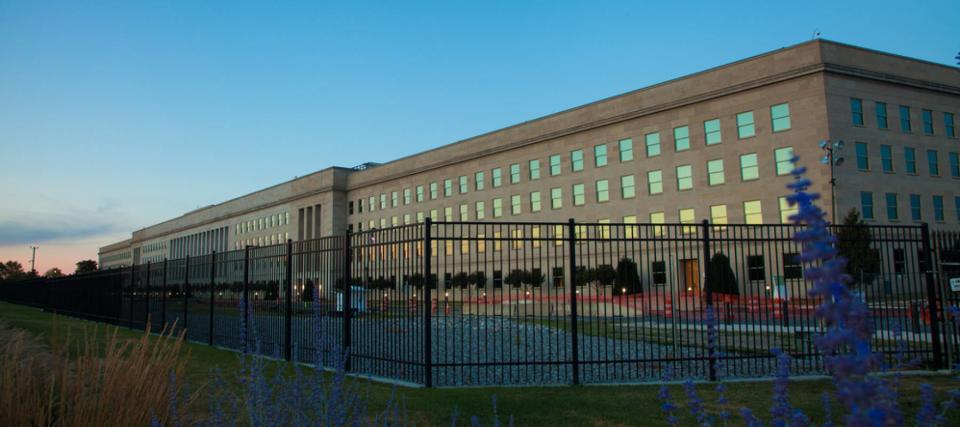‘Lack of accountability’: A new watchdog report reveals Pentagon lost track of a staggering $85 million worth of spare jet parts — here’s how it happened

Way back in 1982, the U.S. military made headlines for allegedly paying $436 for a hammer — something revisionist historians deny ever happened partly because urban myth inflated the figure to $600. But the Navy admitted it indeed paid that $400-something sum, according to an AP story at the time.
Don't miss
Rich young Americans have lost confidence in the stock market — and are betting on these 3 assets instead. Get in now for strong long-term tailwinds
'Hold onto your money': Jeff Bezos says you might want to rethink buying a 'new automobile, refrigerator, or whatever' — here are 3 better recession-proof buys
What do Ashton Kutcher and a Nobel Prize-winning economist have in common? An investing app that turns spare change into a diversified portfolio
If you can figure out what exactly happened, then arguably Uncle Sam could use your skills to make sense of today’s Pentagon waste — which in these days of debt ceiling debate isn’t chump change.
A recent audit conducted by the Government Accountability Office (GAO) revealed that the Pentagon had lost track of hundreds of thousands of spare parts for the F-35 fighter jet. The jet parts — meant for U.S. allies to use — were collectively worth more than $85 million, the GAO says.
Financial mismanagement takes flight
The GAO’s audit focused on the seemingly mundane task of maintaining fighter jets delivered to U.S. allies in recent years. These nations with F-35s rely on a pool of parts held across 50 warehouses and military bases worldwide. According to the GAO’s estimate, the U.S. Department of Defense could spend $1.7 trillion over the life of its F-35 aircraft program.
“One contributing factor to DOD's lack of accountability over these spare parts,” the report reads, “is the lack of agreement among various organizations” who exactly was responsible for tracking the parts.
As a result, the department “was unable to provide the cost, total quantity, and locations of spare parts in the global spares pool,” reads the report. It appears the Pentagon relies on its partners, including Lockheed Martin, the supplier of the F-35 jets, and Pratt & Whitney, which makes their engines, to track this inventory.
This gap in the accounts resulted in the Pentagon failing its audit — for a fifth consecutive time.
Read more: Shopping without a cash back credit card is just losing money — here's how to make sure you don’t miss out on serious savings
Indefensible failures at the defense department
This isn’t the first time the U.S. defense agency has lost track of money or equipment. Back in 2016, auditor Ernst & Young revealed that the Pentagon had failed to properly document costs related to construction projects collectively worth more than $800 million, according to Politico.
That amount was dwarfed a few years later. In 2018, the Pentagon announced an “accounting adjustment” worth $30.7 trillion. For context, U.S. GDP was merely $20.5 trillion that year. This was followed by another accounting adjustment worth $35 trillion in 2019.
These frequent and enormous adjustments reveal the Pentagon’s weak internal financial controls. Mismanagement of public funds could also partly explain why the U.S. defense budget is larger than the next 10 countries combined, according to the Peter G. Peterson Foundation. In fact, the U.S. defense budget is multiple times greater than China, yet the rivalry — and the political notes of patriotism that accompany it — has compelled lawmakers to keep pushing the Pentagon’s budget higher.
Boosting the defense budget could be one of the few non-partisan issues in America. The Biden administration is calling on Congress to provide $842 billion in defense spending for the 2024 budget. Meanwhile, the Trump administration raised the annual budget from $716 billion to $750 billion over the first few years of its tenure.
As for the public: 74% of Americans want to either sustain or expand the defense budget — which, if you think about, makes a $600 hammer, or a $6,000 hammer, and all those lost aircraft parts begin to sound like the (very wasteful) cost of doing business.
What to read next
Worried about the economy? Here are the best shock-proof assets for your portfolio. (They’re all outside of the stock market.)
You could be the landlord of Walmart, Whole Foods and CVS (and collect fat grocery store-anchored income on a quarterly basis)
Here's how much money the average middle-class American household makes — how do you stack up?
This article provides information only and should not be construed as advice. It is provided without warranty of any kind.

 Yahoo Finance
Yahoo Finance 